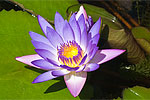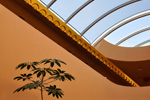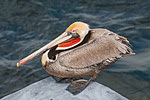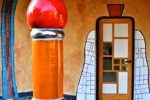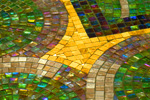Best Compact Superzoom Cameras
ALSO RAN:
Nikon Coolpix S9300
Nikon Coolpix S9300
The Nikon S9300 compact superzoom camera fits squarely in the middle of the category both in specs and performance. It's 18x zoom range is competitive; with a 450mm equivalent telephoto on the long end, it has a longer reach than the Sony HX9V and HX10V (380mm), but not quite the reach of the Canon SX260 or Fuji F770 (500mm) or even the Panasonic ZS20 (480mm). It has a lot to recommend it, with a full complement of desirable features including 3D, panorama mode, GPS, HDR, and shooting modes that include selective color placement on b/w images for creative effects. Its menu is intuitive and easy to use.
The S9300 is capable of taking a great picture, and when its exposure calculations and autofocus are hitting on all cylinders, the results are impressive. The problem we had with the S9300 was that things were not always hitting on all cylinders, and too often we'd end up with a soft focus or odd exposure that compromised picture quality. And when you want to readjust the zoom range after taking a shot, the camera just won't get out of its own way--the zoom cannot be moved for almost a full 5 seconds after a photo is taken, which is about double the average lag time of the cameras in the compact superzoom group.
 |
What's HOT about the Nikon Coolpix S9300:
1. Capable of taking great pictures when in focus
2. Great menu layout, easy to use
3. 1080p/30 video, good but not as fast as the ZS20 at 1080p/60
4. Competitive 18x zoom, 25-450mm
5. Good continuous autofocus in video, relatively easy to control, non-jerky zoom
6. Zoom temporary stalls to let you know when moving from optical to digital.
7. High resolution screen (921,000 dots)
8. 3D photos
9. Panorama mode
10. On-board HDR
11. GPS and electronic compass
12. Fast 1/4000 sec shutter speed (compared to 1/2000 on Panasonic ZS20)
What's NOT so hot about the Nikon Coolpix S9300:
1. Slow zoom response between shots, slows down shooting action
2. Auto focus is unpredictable--too many soft pictures
3. LCD screen is relatively dim and low in contrast
4. Flash pops up under left finger
5. Image review on or off, no time control
6. Sound settings on or off, no level control
7. Four button pokes to delete a photo
A Look at the Nikon S3900
The Nikon S9300 image quality is characterized by a slightly warm color temperature at default settings, lower than average color saturation and contrast, and lower than average image sharpness. In particular the lens on our test sample showed excessive blurring in the low right (see the Brownie camera in the Photoscope still life):
When pixel-peeping at 100%, solid colors tend to show some granularity and edge definition is not precise on color boundaries (see the Colman's Mustard can and the red/white checked fabric). The S9300 performs relatively better at higher ISOs. Though picture quality is compromised at higher ISOs like it is on all cameras, the Nikon S9300 does not seem to lose as much picture vitality as most of its competitors. For example, it holds a solid blue at 800 or even 1600 ISO while cameras like the Sony HX9V and HX10V, the Pentax VS20, and the Fuji F770 at higher ISOs lose the blue and render it more gray.
The Verdict
The Nikon S9300 is a middle of the pack performer in the compact superzoom camera group. It is capable of taking fine pictures and if your primary image sharing is small to medium sized images on Facebook or other social media, you probably wouldn't ever find anything to complain about as far as picture quality is concerned. In action, the S9300 is not the fastest in the group, it doesn't have the longest telephoto zoom reach, and its LCD screen is average at best in terms of visibility in sunlight. For the money it is not a bad camera, but it not one of the best either.
